Did you know that traditional residential water systems can account for over 15% of a home’s total energy use ? If you’re searching for a way to lower your utility bills, reduce your home’s carbon footprint, and future-proof your property, the answer lies in eco-friendly plumbing materials. From water conservation to state-of-the-art plumbing solutions , making the switch to green alternatives is easier and more beneficial than ever. Explore the latest innovations in friendly plumbing , discover materials built for longevity, and learn how to make smart upgrades that pay off—both financially and environmentally.
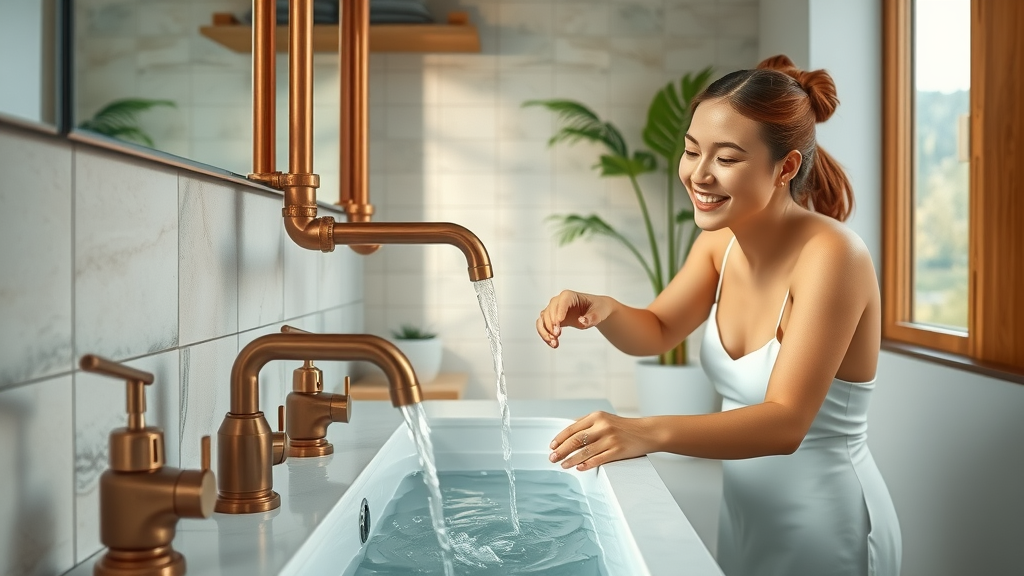
Why Eco-Friendly Plumbing Materials Are Essential for Sustainable Plumbing and Water Conservation
The urgency for eco-friendly plumbing materials isn’t just a matter of environmental activism—it represents a critical shift in responsible water system management for today’s households. Traditional plumbing materials can leach harmful chemicals, have limited recyclability, and are often responsible for higher water and energy consumption. In contrast, adopting sustainable plumbing practices helps homeowners reduce water usage, minimize their property’s environmental impact , and ultimately lower water and utility bills.
With growing urban populations and increasing pressures on municipal plumbing systems , conserving water through innovative plumbing solutions is more important than ever. Institutions and families alike have observed significant savings and improved water quality after upgrading to eco-conscious materials. Studies show that homes employing eco-friendly alternatives can reduce water consumption by up to 30%, protect local ecosystems, and enhance the overall resilience of their plumbing system .
"Did you know that residential water systems account for over 15% of total energy use in homes? Upgrading to eco-friendly plumbing materials can save resources and future-proof your property."
What You Will Gain By Switching to Eco-Friendly Plumbing Materials
- Understanding sustainable plumbing practices
- Comparing eco-friendly alternatives to traditional materials
- Choosing responsible plumbing solutions for home renovations
- Reducing water usage through advanced plumbing systems
- Maximizing efficiency in your water heater and appliances
- Long-term cost benefits of eco-conscious plumbing
Defining Eco-Friendly Plumbing Materials: Core Concepts and Criteria
Characteristics of Eco-Friendly Plumbing Materials in Modern Plumbing Systems
Eco-friendly plumbing materials are defined by their low environmental impact, long life span, and safety both during use and manufacturing. To be considered sustainable within modern plumbing systems , these materials must meet strict standards: they should be non-toxic, recyclable, and resistant to corrosion or leaching. Examples include materials like copper, PEX, HDPE, and stainless steel , each of which is chosen for its durability, efficiency, and recyclability.
Unlike older options that degrade or become hazardous over time, contemporary eco-conscious pipes and fixtures are designed to work seamlessly within energy-efficient water systems, without contributing to water contamination or unnecessary resource extraction. Certifications from global sustainability organizations further support their adoption, ensuring each product meets regulatory standards for safety and environmental impact.
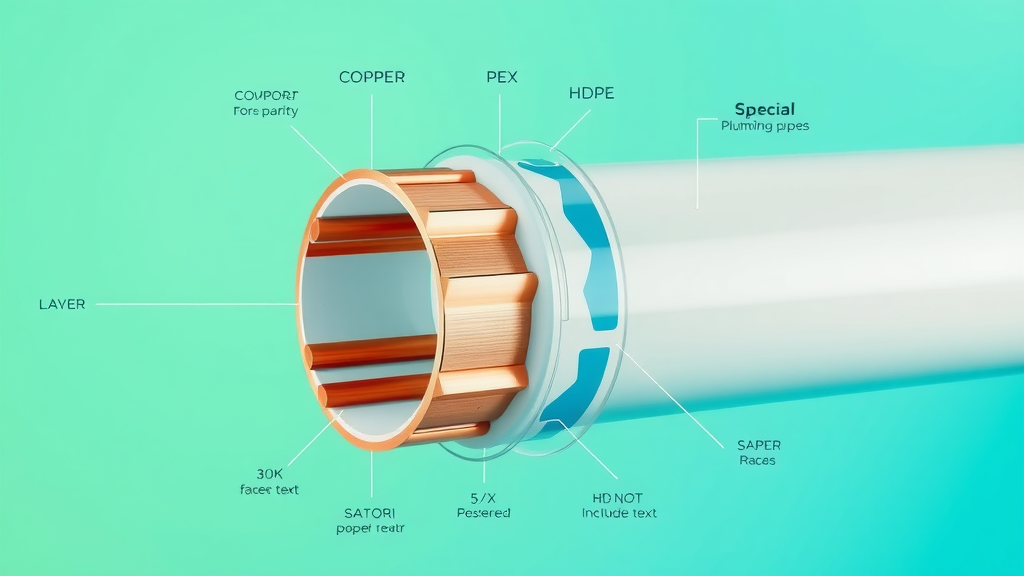
How Sustainable Plumbing Supports the Water System and Friendly Plumbing Solutions
Embracing sustainable plumbing materials strengthens not only individual home water systems but also the greater community infrastructure. By choosing eco-friendly pipes and fixtures, you promote water conservation and help prevent leaks—which are a common source of wasted water in conventional plumbing systems. Modern friendly plumbing solutions prioritize flow efficiency, leak-prevention, and minimal toxic runoff, leading to far-reaching benefits for water sources and the environment.
Switching from outdated, resource-intensive components to advanced, sustainable alternatives means your household becomes part of the solution—not just for today, but for generations. Homeowners who invest in sustainable plumbing report tangible benefits: lower utility bills , greater peace of mind, and an elevated property value. Strong partnerships between certified plumbers and green manufacturers are driving this shift toward future-ready homes.
"Selecting sustainable plumbing products isn’t just a trend—it is a necessity for future-ready homes."
Top Choices: The Most Popular Eco-Friendly Plumbing Materials on the Market
Copper: An Eco-Conscious Plumbing Solution
Copper has been the gold standard for eco-friendly plumbing materials for decades. Its natural resistance to bacteria and corrosion makes it ideal for potable water systems. Copper pipes can last more than 50 years with proper installation and are 100% recyclable. This reduces their overall environmental impact, minimizing the demand for new raw resources while supporting circular manufacturing practices.
Additionally, copper is safe for water systems due to its inability to leach toxic chemicals, unlike some plastics or treated metals. From a cost perspective, while copper may carry a higher upfront investment, its durability means fewer replacements and lowered repair costs down the line—making it a solid long-term plumbing solution .
PEX and HDPE: Flexible and Recyclable Sustainable Plumbing Pipe Options
PEX (cross-linked polyethylene) and HDPE (high-density polyethylene) are fast becoming favorites among homeowners upgrading to environmentally friendly plumbing. Both offer flexibility, ease of installation, and a reduced likelihood of leakage due to fewer required joints. PEX’s ability to expand and contract makes it particularly resilient in areas prone to freeze-thaw cycles, while HDPE is known for its high strength-to-density ratio.
These plastics are recyclable, have low toxicity, and require less energy to manufacture than traditional metal pipes. When used in conjunction with low-flow fixtures and modern appliances, they streamline the water system, minimize water loss , and contribute to household water conservation efforts.
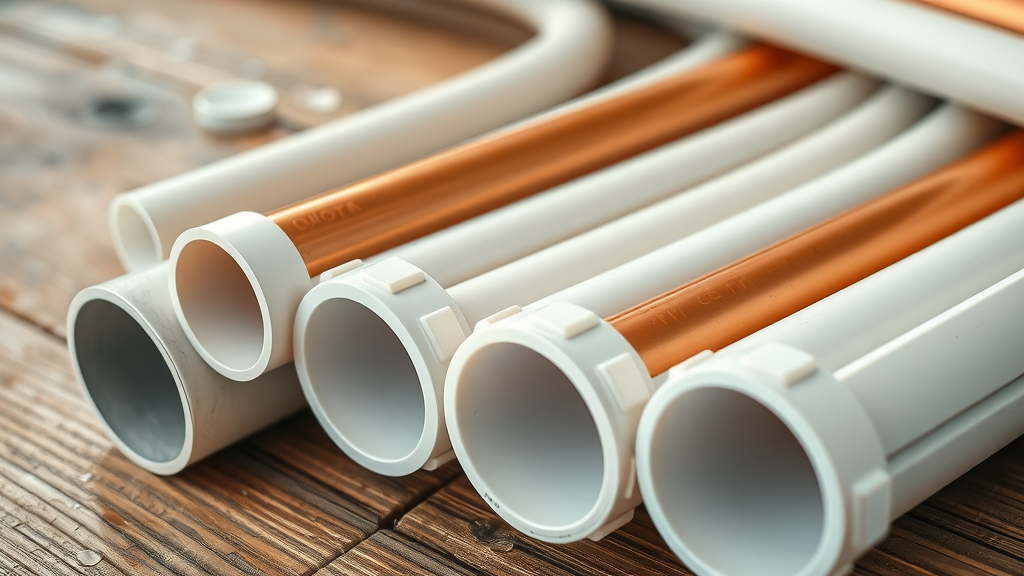
Stainless Steel: Durable and Recyclable Plumbing System Material
Stainless steel piping offers genuine green credentials as it resists rust, corrosion, and chemical leaching. These pipes can handle high water pressure and temperature changes, making them a reliable backbone for any plumbing system . Stainless steel is almost entirely recyclable at the end of its lifecycle—a quality that places it high among the best eco-friendly plumbing materials .
Its durability supports substantial long-term savings as these pipes rarely need replacing or major repairs. While the initial installation may be pricier compared to PEX or HDPE, the lifespan, resilience against tough water conditions, and recyclability offset the upfront cost for discerning homeowners and builders.
CPVC vs. Green PVC: Comparing Eco-Friendly Plumbing Materials
Chlorinated polyvinyl chloride (CPVC) is often used in modern plumbing solutions due to its heat resistance and chemical stability. However, concerns about manufacturing emissions have led to the rise of “ green PVC ,” which replaces many traditional, hazardous additives with bio-based or recyclable inputs.
Green PVC pipes result in reduced environmental impact at both the manufacturing and end-of-life phases. For those seeking cost-effective, low-maintenance alternatives, green PVC and CPVC can be valuable components in a sustainable water system—especially when sourced from manufacturers with strong environmental credentials.
Other Innovative Alternatives (Bamboo, Clay, Recycled Composite Pipes)
Beyond mainstream materials, science and industry are embracing innovative eco-friendly alternatives. Bamboo pipes are prized in some cultures for rapid renewability and naturally antimicrobial properties. Clay pipes, used for centuries, offer exceptional chemical stability and are entirely biodegradable. New composite materials, often made from recycled plastics or wood fibers, merge durability with low impact, resulting in solutions tailored for specific water system challenges.
These alternatives often require specialized installation, but they’re helping redefine what’s possible in the realm of sustainable plumbing. Their adoption is especially significant in green construction and homes seeking to qualify for the highest sustainability certifications.
| Material | Sustainability | Longevity | Best Use | Recyclability | Environmental Impact |
|---|---|---|---|---|---|
| Copper | Excellent | 50+ years | Potable Water, Heating | 100% | Low (recyclable, durable) |
| PEX | Good | 40+ years | Indoor Plumbing | High | Very low (energy-efficient to produce) |
| HDPE | Good | 50+ years | Main Lines, Irrigation | High | Very low |
| Stainless Steel | Excellent | 60+ years | Commercial/Residential | 99% | Very low |
| Green PVC | Improved | 30+ years | Drainage, Non-potable | Moderate | Improved over traditional |
| Bamboo/Clay/Recycled Composite | Varies (Bamboo: Excellent) | 20-50 years | Specialty/Green Builds | Varies (Biodegradable/Recyclable) | Very low (renewable, minimal toxins) |
Water Conservation and Plumbing Solutions: Elevating Your Home’s Efficiency

Low-Flow Toilets and Flow Toilet Technologies in Eco-Friendly Plumbing Systems
Today’s low-flow toilet designs use innovative flushing mechanisms to reduce water usage per flush by up to 70% compared to conventional models. This technology ensures strong performance while saving countless gallons of water every year. Modern flow toilets utilize dual-flush or pressure-assisted systems to minimize waste and water per flush, providing effective waste removal with less environmental impact.
Upgrading to these eco-friendly toilets also supports municipal water conservation efforts and helps lower individual water bills. For homeowners conscious of both cost and sustainability, investing in low-flow or dual-flush toilets is among the easiest first steps in transforming a plumbing system .
Water-Saving Faucets, Flow Toilets, and Shower Innovations
Water-saving fixtures—like aerated faucets and eco-friendly showerheads—are designed to reduce water flow without sacrificing pressure. Advanced models mix air into the water stream, resulting in robust water flow while cutting household consumption by thousands of gallons per year. These solutions deliver immediate benefits: reduced utility bill costs and a smaller household carbon footprint .
By combining efficient flow toilets , faucets, and showers, you create an integrated water conservation system that provides comfort and savings. These updates are easily retrofitted in older homes and add considerable value to property upgrades.
Rainwater Harvesting and Its Role in Sustainable Plumbing
Rainwater harvesting is the practice of capturing and storing rainwater for non-potable uses—like irrigation, flushing toilets, or laundry—rather than letting it run off. Collection tanks and filtration systems can dramatically reduce strain on public water systems while providing a renewable alternative for many daily household activities.
When matched with eco-friendly pipes and fixtures, rainwater harvesting delivers true self-sufficiency and enhances a home’s overall sustainability rating—a central goal for anyone pursuing sustainable plumbing solutions.
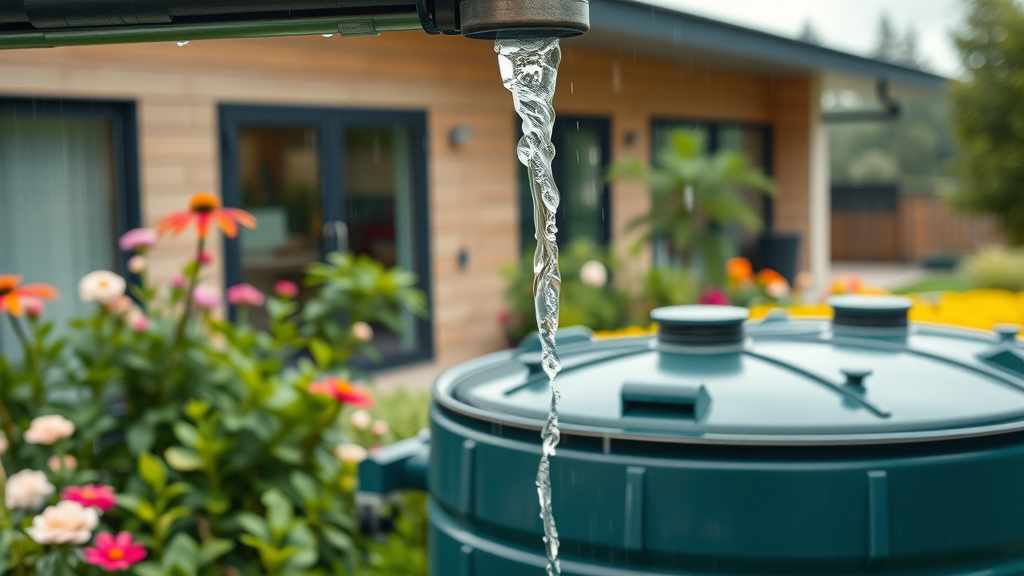
Greywater Reuse Systems for Responsible Water Systems
Greywater systems recycle water from sinks, showers, and washing machines, diverting it to landscaping or toilet flushing. This approach reduces the need for fresh water and helps homes comply with stricter water usage standards. Smart greywater reuse systems are designed to be safe and user-friendly, with automatic filtration and switching to maintain water hygiene.
Adopting greywater reuse as part of an integrated eco-friendly plumbing strategy yields both environmental and financial rewards, helping households and entire neighborhoods reduce water waste and bolster drought resilience.
Modern Water Heaters: Eco-Friendly Alternatives for Home Water Systems
Tankless Water Heaters: Cutting-Edge Plumbing Solutions
Tankless water heaters, also known as on-demand units, heat water only when it is needed. This eliminates the standby energy losses associated with traditional tanks, contributing to outstanding energy efficiency in your plumbing system. Homeowners who upgrade to tankless water heaters report significant reductions in both gas and electric utility bills.
These units are sleek, compact, and designed for longevity, with lifespans often exceeding 20 years. While the initial installation cost may be higher, the rapid payback through lower monthly energy use makes them a top pick in modern eco-friendly plumbing systems.
Solar Water Heaters and Their Place in Friendly Plumbing
Utilizing the sun’s free energy, solar water heaters can provide up to 70% of a home’s annual hot water demands. These systems use solar collectors mounted on rooftops to pre-heat water before entering a conventional or tankless water heater, further reducing fossil fuel consumption. Solar water heaters are especially effective in regions with ample sunshine and can be combined with other green plumbing options for maximum energy and water savings.
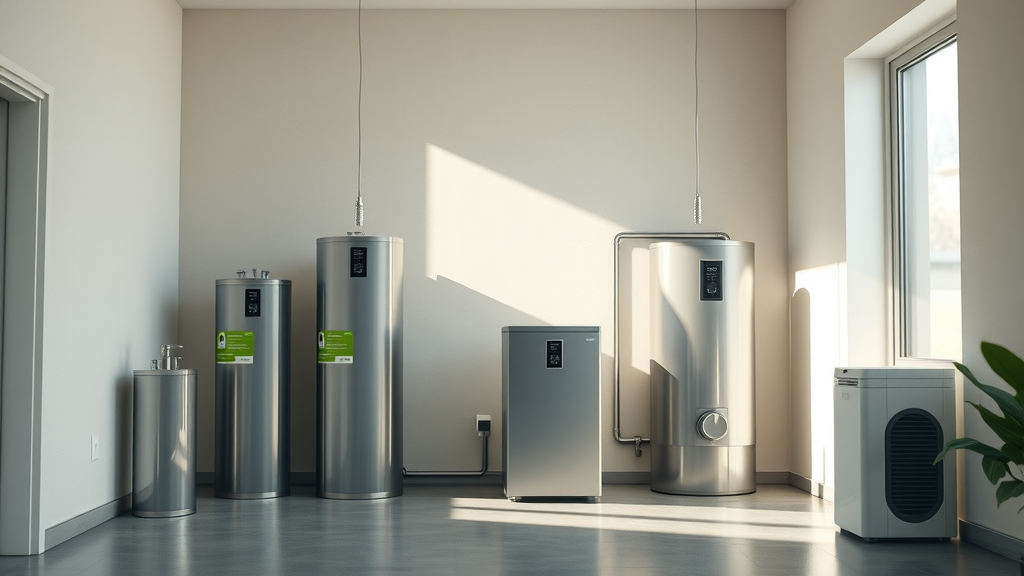
Efficient Washing Machine and Appliance Integration for Sustainable Plumbing
Modern eco-friendly washing machines are built to utilize less water and energy per load, often featuring smart sensors and precise water flow controls. When paired with eco-friendly pipes and water heaters, these appliances further cut down on household water and energy consumption. Choosing Energy Star or similarly certified machines ensures your sustainable plumbing system remains efficient throughout its lifetime.
By integrating efficient appliances with your upgraded plumbing, you maximize resource savings—ultimately lowering your ongoing utility costs and making your home’s water system resilient and efficient.
How to Retrofit and Upgrade to Eco-Friendly Plumbing Materials in Existing Plumbing Systems
- Step-by-step process for evaluating current water system
- Guidance for material selection in plumbing solutions
- Partnering with professional installers for sustainable plumbing
- Tips for ongoing maintenance to maximize efficiency and longevity
To retrofit an older home for sustainable plumbing, start by engaging a certified plumber to inspect your current pipes, fixtures, and water heater. Once the assessment is complete, research and compare the best eco-friendly plumbing materials—considering both compatibility and local codes.
Seek out licensed installers familiar with green solutions, especially for complex upgrades involving solar water heaters, greywater reuse, or rainwater harvesting systems. Schedule regular maintenance, such as descaling pipes and servicing your appliances, to extend the life and efficiency of your water and plumbing systems.
Evaluating Eco-Friendly Plumbing Materials: Costs, ROI, and Long-Term Benefits
| Solution | Installation Cost | Average Lifespan | Annual Savings | Estimated ROI |
|---|---|---|---|---|
| Copper Pipes | £2,500 - £5,500 | 50+ years | £150+ | 5-10 years |
| PEX/HDPE Pipes | £1,800 - £3,500 | 40+ years | £120+ | 4-8 years |
| Tankless Water Heater | £1,000 - £2,200 | 20+ years | £100+ | 5-7 years |
| Solar Water Heater | £3,000 - £6,000 | 20+ years | £250+ | 6-10 years |
| Rainwater Harvesting | £1,500 - £3,000 | 25+ years | £80+ | 8-12 years |
"Smart investments in eco-friendly plumbing materials can reduce water bills and environmental impact simultaneously."
While eco-friendly plumbing materials may have higher upfront costs, their durability and energy savings translate into substantial returns over time. Factor in potential increases in property value, reduced maintenance, and growing incentives for sustainable upgrades.
Case Studies: Successful Households and Buildings Using Eco-Friendly Plumbing Materials
- Real-life examples of sustainable plumbing projects
- Lessons learned and outcomes achieved
- Comparative analysis with conventional systems
A Midlands family replaced galvanised pipework with PEX and installed low-flow toilets, reducing their water consumption by 35%. Their annual utility bills dropped by £210, and their home value increased thanks to sustainability updates. In London, a green-certified office retrofitted stainless steel pipes and a rooftop rainwater harvesting system. This delivered more efficient plumbing solutions , improved water quality, and helped them meet net-zero emission goals ahead of schedule.
Compared to conventional upgrades, eco-friendly retrofits consistently resulted in fewer leaks, reduced downtime, and easier integration with future-ready technologies. Overall, users praise the reliability, efficiency, and peace of mind afforded by sustainable plumbing systems.
Addressing Common Concerns and Misconceptions about Eco-Friendly Plumbing Materials
"There’s a misconception that eco-friendly plumbing materials are costly and inefficient—let’s debunk that myth with data and expert insights."
Some believe eco-friendly plumbing solutions are prohibitively expensive or perform poorly compared to traditional systems. In truth, most sustainable pipes and fixtures have lifespans equal or superior to their conventional counterparts and deliver added benefits like lower maintenance and improved water quality.
Additionally, government grants and tax breaks can substantially offset your investment. With careful planning, an upgrade to eco-friendly options can be accomplished within any renovation budget, with long-term savings outpacing initial expenses.
People Also Ask: What are the sustainable materials for plumbing?
Answer: Sustainable materials for plumbing include copper, PEX, stainless steel, CPVC, bamboo, and recycled composites; all provide longevity and low environmental impact when implemented in a water system.
People Also Ask: What is the eco-friendly alternative to PVC pipe?
Answer: HDPE, PEX, and recycled composite pipes are recognized as eco-friendly alternatives to PVC pipes in sustainable plumbing solutions, offering durability and reduced toxicity.
People Also Ask: What material is more eco-friendly?
Answer: Copper, stainless steel, and PEX are generally considered the most eco-friendly plumbing materials due to recyclability and low environmental impact throughout their lifespan.
People Also Ask: What is eco-friendly PVC?
Answer: Eco-friendly or ‘green PVC’ is manufactured with bio-based additives and recyclable content, reducing harmful emissions in the plumbing system compared to traditional PVC.
Frequently Asked Questions on Eco-Friendly Plumbing Materials and Sustainable Plumbing Practices
- Can eco-friendly plumbing materials be retrofitted in old homes? Yes, most sustainable pipes and fixtures can be integrated into existing plumbing systems with the help of professional installers, enhancing performance without major disruption.
- Do sustainable plumbing systems impact home value? Absolutely—upgrades to eco-friendly systems often increase property value and appeal to environmentally-conscious buyers.
- Which eco-friendly plumbing solutions require professional installation? Advanced systems like tankless water heaters, solar water heaters, and rainwater harvesting typically require certified installers to ensure efficiency and warranty protection.
- How do these materials perform in harsh water systems? Copper, stainless steel, and HDPE perform well under varied pH conditions and water pressure, often outperforming traditional options in longevity and reliability.
- What certifications should I look for in sustainable materials? Reputable brands should offer certifications such as WaterMark, WRAS, Energy Star, or LEED, ensuring environmental compliance and safety.
Best Practices for Maintaining Eco-Friendly Plumbing Systems and Water Conservation
- Routine inspections and timely repairs
- Seasonal water system optimization tips
- Product recommendations for sustainable plumbing system upkeep
Staying proactive with inspections, leak checks, and filter replacements enhances both the longevity and efficiency of your eco-friendly plumbing system. Choose certified products and consult professionals to keep your system working at peak performance.
Key Factors to Consider Before Choosing Eco-Friendly Plumbing Materials for Your Plumbing System
- Environmental impact assessment
- Budget and long-term ROI analysis
- Technical compatibility with existing water system
- Ease and cost of installation
- Availability of skilled plumbing professionals
Key Takeaways: Eco-Friendly Plumbing Materials and Their Impact on Modern Plumbing Solutions
- Eco-friendly plumbing materials can significantly improve water conservation and reduce utility bills.
- Modern sustainable plumbing solutions offer durability, safety, and enhanced water system efficiency.
- Investing in responsible materials future-proofs property value and sustainability.
Next Steps: Upgrade to Eco-Friendly Plumbing Materials With Expert Guidance
"Ready to make the switch? For expert help or advice from Ed Serrell Plumbing and Heating call 0796 688 4368 , or email info@edsplumbing.co.uk ."
Video: An Overview of Eco-Friendly Plumbing Materials in Sustainable Plumbing Systems
Video: Comparing Conventional and Eco-Friendly Plumbing Solutions in Modern Water Systems
Video: Step-by-Step Guide to Retrofitting Eco-Friendly Plumbing Materials
Conclusion
Act now—replace outdated pipes and fixtures with eco-friendly plumbing materials to reduce utility bills, conserve water, and increase your home’s value for years to come.
Sources
- WaterSafe – https://www.watersafe.org.uk/advice/plumbing-materials/
- WRAS – https://www.wras.co.uk/consumers/materials-products/
- Energy.gov Water Heating – https://www.energy.gov/energysaver/appliances-and-electronics/water-heating
- EPA WaterSense – https://www.epa.gov/watersense
- Green Building Advisor – https://www.greenbuildingadvisor.com/
To enhance your understanding of eco-friendly plumbing materials, consider exploring the following resources:
- “Guide To Choosing Eco-Friendly Plumbing Products” ( plumbingcircle.com )
This guide provides insights into energy-efficient options like tankless water heaters and sustainable materials such as bamboo and recycled plastic pipes, helping you make informed decisions for a greener plumbing system.
- “Eco-Friendly Plumbing Solutions: How to Make Your Home More Sustainable” ( silverbackplumbinganddrain.com )
This article discusses the benefits of PEX piping and recycled copper pipes, highlighting their durability and reduced environmental impact, which can contribute to a more sustainable home.
If you’re serious about adopting eco-friendly plumbing materials, these resources will provide valuable information to guide your choices.
 Add Row
Add Row  Add
Add 








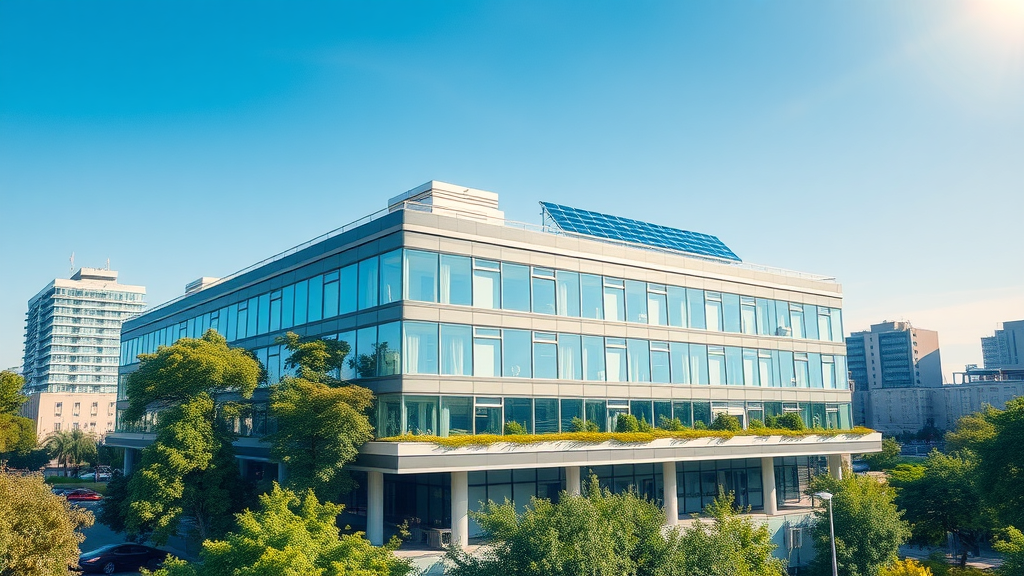
Write A Comment